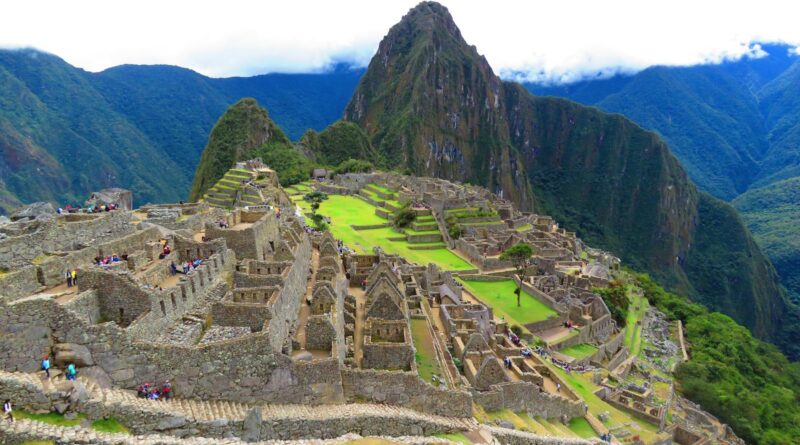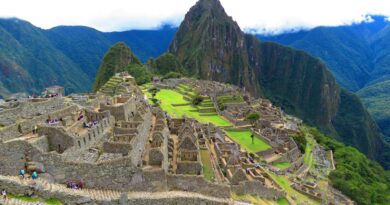Educational Machu Picchu Tours for Students
Educational Machu Picchu Tours for Students: A Journey Into History and Culture
Educational Machu Picchu tours for students provide an unforgettable opportunity to explore one of the world’s most legendary archaeological sites while deepening understanding of history, culture, and the natural world. Visiting Machu Picchu is more than a sightseeing trip; it’s a hands-on classroom set against Peru’s stunning Andean landscape, where every stone tells a story and each pathway weaves together the past and present.
Why Machu Picchu is a Top Destination for Student Learning
Machu Picchu, perched high in the Peruvian Andes, is a UNESCO World Heritage Site and one of South America’s premier educational travel destinations. Its allure lies not only in its breathtaking beauty but also in its profound historical significance. For students, Machu Picchu is a living laboratory where they can witness the genius of Inca engineering, understand pre-Columbian cultures, and reflect on the importance of heritage preservation.
On educational tours, students have the chance to step into the shoes of adventurers and archaeologists. Guided by expert instructors, they traverse the ancient city’s terraces, temples, and plazas, learning about the site’s construction, purpose, and hidden mysteries. These experiences foster critical thinking, curiosity, and appreciation for global history.
Advantages of Educational Machu Picchu Tours for Students
Customization is at the heart of student-focused tours. Programs are often tailored to align with academic goals, whether they highlight world history, environmental science, architecture, or anthropology. Here’s what makes these trips particularly valuable:
Immersive Learning Experiences
Instead of reading about the Incas in textbooks, students gain first-hand experience in a setting that transcends traditional classroom walls. Activities might include:
– Guided explorations of Machu Picchu and related Inca sites like the Sacred Valley
– Participation in interactive workshops on Andean agriculture, textile weaving, or indigenous traditions
– Engagement in archaeological simulations where learners ‘excavate’ mock artifacts
Cross-cultural Connections
Tours often include visits to local communities where students can interact with modern-day descendants of the Inca civilization. These exchanges offer authentic insights into the region’s living culture, language, and traditions, fostering empathy and global citizenship.
Environmental Awareness
Surrounded by lush cloud forests and dramatic peaks, students learn about Andean ecosystems and the importance of conservation. Discussions around sustainable tourism and environmental challenges help them understand the delicate balance between preserving heritage and facilitating access.
What to Expect on Educational Machu Picchu Tours for Students
Planning an educational adventure to Machu Picchu involves several key stages:
Pre-departure Preparation
Teachers and organizers usually begin with orientation sessions, covering Peruvian history, local customs, and essential travel tips. Students are encouraged to research aspects of Inca culture or the natural environment, preparing them for deeper engagement onsite.
Travel Logistics
Many tours start in Cusco, the historic capital of the Inca Empire, giving students a chance to acclimatize to the altitude and explore important landmarks like Qorikancha and Sacsayhuamán before heading to Machu Picchu by train and bus.
Guided Site Visits
Professional guides lead learners through Machu Picchu, explaining its layout, function, and the mysteries that still puzzle scholars. Students might analyze the engineering marvels, such as terracing for agriculture or precisely cut stones that have endured centuries of earthquakes.
Integration with Academic Subjects
Educators can connect the visit with classroom learning by assigning research projects, reflective essays, or photo journals. By linking Machu Picchu’s heritage to studies in world history, geography, or biology, the trip becomes a transformative educational experience.
Tips for Planning Machu Picchu Educational Tours
When organizing a Machu Picchu tour for students, consider these tips for maximum impact:
– Choose experienced operators: Select companies that specialize in educational travel and have knowledgeable, bilingual guides.
– Adjust for altitude: Plan time for gradual acclimatization, as altitude sickness is common for visitors coming from sea level.
– Focus on safety and support: Ensure that itineraries are age-appropriate and have contingency plans for health or weather issues.
– Emphasize Latin American cultural respect: Encourage students to learn some basic Spanish or Quechua phrases and respect local customs and sites.
– Promote reflection: Build in time for students to process their experiences through journaling, group discussions, or creative projects.
The Lasting Impact of Visiting Machu Picchu as a Student
Participating in an educational tour of Machu Picchu is often a turning point for young travelers. The journey not only expands academic knowledge but also ignites a passion for cultural discovery and adventure. Students return home with a richer worldview, a stronger sense of global awareness, and stories that inspire their peers and communities.
—
FAQ: Educational Machu Picchu Tours for Students
1. What is the best age for students to visit Machu Picchu?
Most tours are tailored for middle school, high school, or university students. The experience is ideal for ages 12 and up due to the physical demands and educational content.
2. How long does a typical student tour of Machu Picchu last?
Educational tours often range from 5 to 10 days, allowing for acclimatization in Cusco, in-depth exploration of the archaeological site, and visits to surrounding areas.
3. Is it safe for students to travel to Machu Picchu?
With proper planning, reputable operators, and careful supervision, traveling to Machu Picchu is considered safe for student groups. Attention to health and acclimatization is essential.
4. What should students pack for a tour of Machu Picchu?
Recommended items include layered clothing, rain gear, comfortable walking shoes, sun protection, reusable water bottle, and a journal or notebook for reflections.
5. Can students with physical disabilities visit Machu Picchu?
Machu Picchu’s terrain can be challenging, but there are accessible routes and support options available. It’s best to consult tour providers for specific accommodations.
6. How does visiting Machu Picchu align with school curricula?
The site offers learning opportunities in history, geography, architecture, anthropology, environmental science, and language studies, tying directly into many international curricula.
7. Are educational Machu Picchu tours expensive?
Costs vary depending on group size, itinerary, and season. Many organizations offer scholarships or fundraising support to help make the experience accessible.
8. What educational activities are included in these tours?
Tours often feature guided site visits, workshops on Inca culture and crafts, community interactions, and hands-on learning exercises tailored to student interests.


